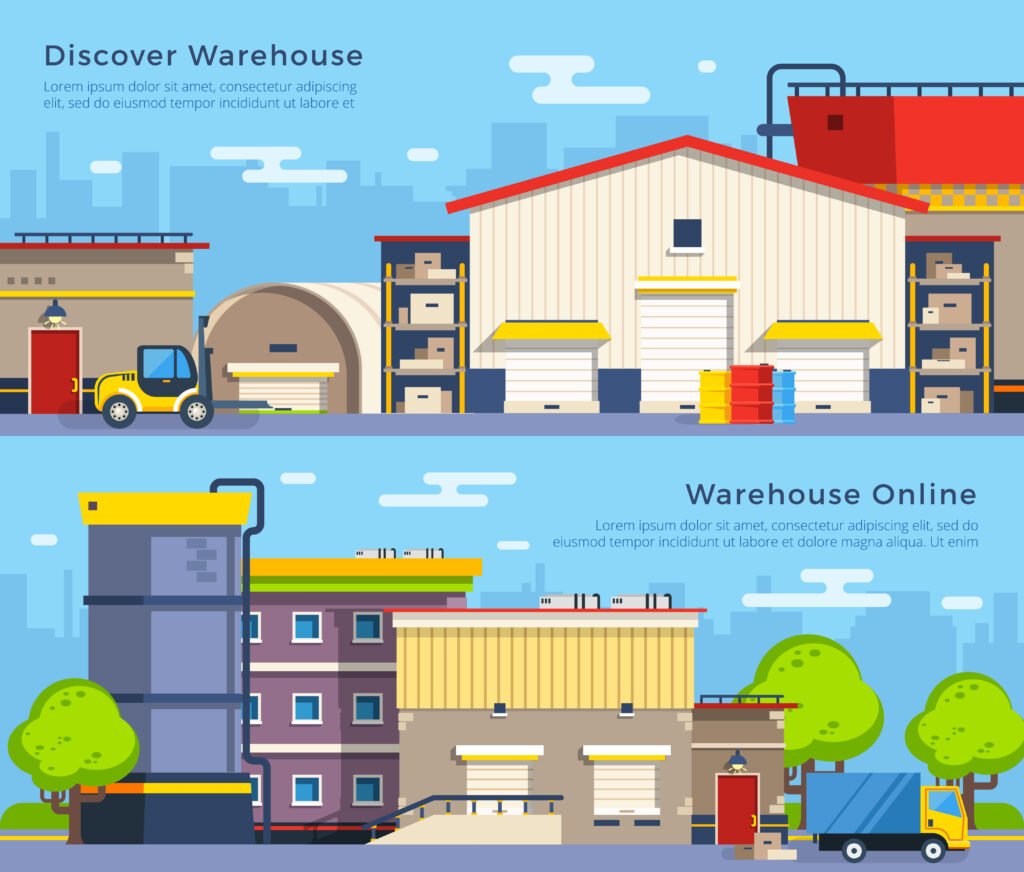
Learn the key differences between industrial and commercial warehouses, including, technology to make informed decisions for your business
What is an Industrial Warehouse?
An industrial warehouse is primarily used for manufacturing, processing, and storage of raw materials or semi-finished products. These warehouses are often designed to accommodate heavy machinery and production lines, making them an integral part of the supply chain for manufacturers.
Key Features:
- Location: Usually situated on the outskirts of cities or near industrial zones.
- Design: Large spaces with reinforced flooring, high ceilings, and specialized ventilation systems.
- Technology: Integrates AI and robotics to improve manufacturing efficiency.
- Operations: Supports heavy-duty equipment and large-scale production.
- Sustainability: Often integrates solar panels and energy-efficient systems.
What is a Commercial Warehouse?
A commercial warehouse, on the other hand, is designed for storage and distribution of goods to retailers, wholesalers, and consumers. These warehouses are commonly used in e-commerce fulfillment centers, retail businesses, and third-party logistics (3PL) providers.
Key Features:
- Location: Positioned near transportation hubs for easy distribution.
- Design: Organized shelving systems and climate-controlled environments.
- Technology: Uses warehouse management software for inventory tracking and order processing.
- Operations: Focuses on packaging, shipping, and last-mile delivery.
- Sustainability: Incorporates green warehousing strategies to minimize environmental impact.
Comparing Industrial and Commercial Warehouses
1. Functionality and Usage
- Industrial warehouses focus on production and assembly, often with in-house manufacturing.
- Commercial warehouses emphasize storage, inventory management, and distribution.
2. Technology and Automation
Both types of warehouses leverage technology, but their applications vary:
- Industrial Warehouses: Utilize AI, robotics, and predictive analytics to enhance production efficiency.
- Commercial Warehouses: Rely on RFID technology, IoT devices, and cloud-based warehouse management systems for optimized logistics.
3. Sustainability Trends
Sustainability is transforming warehouse design and construction:
- Industrial Warehouses: Implement solar panels and energy-efficient designs to reduce operational costs.
- Commercial Warehouses: Adopt zero-waste warehousing practices and green building certifications to enhance brand reputation.
4. Security and Blockchain Integration
- Industrial Warehouses: Use blockchain for tracking raw materials and production processes.
- Commercial Warehouses: Utilize blockchain for secure transactions and preventing inventory fraud.
5. Future Trends in Warehouse Design and Infrastructure
Warehouses are evolving with new technologies and sustainable practices:
- Smart Warehouses: Integration of AI, IoT, and cloud-based systems.
- Drones for Warehouse Operations: Faster inventory checks and real-time monitoring.
- Green Construction Materials: Eco-friendly materials to minimize carbon footprints.
- Energy-Efficient Facilities: Improved ventilation and renewable energy sources.
- Visit The Digital Farma . for web & Digital services.
Conclusion
Understanding the difference between industrial and commercial warehouses is key to optimizing supply chain operations and making strategic business decisions. Whether you need a manufacturing hub or a distribution center, aligning warehouse type with business needs is essential.
Looking for expert guidance? Masmk Associates offers comprehensive warehouse services to help you build efficient, technology-driven, and sustainable facilities.
